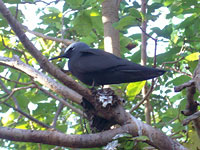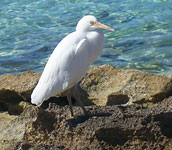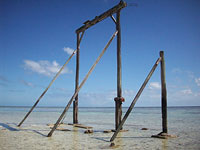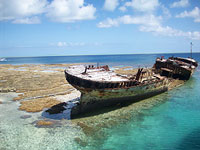

 | |||||||||||||||||||||||
|
|
Journals 2008/2009Zamaria Rocio
September 10, 2008 I woke to all this bird chatter outside my window. When I went out that morning, I could tell there was something different about the island. There were more birds around and they were very noisy. I was finding out quickly that Heron Island was the home to many land and sea birds. Not only were there birds that were island residents, but also there were birds that were migratory or just visiting.
Each year, birds like the Black Noddy Terns (Anous minutus) and Wedge-tailed Shearwaters (Puffinus pacificus) return to the island to breed. The breeding season usually starts in September or October. The Noddy Tern, whose population during their breeding season could reach between 75,00 and 125,000 individuals, could last until March. The Shearwaters' population would get to be between 20,000 and 30,000 and they are usually off the island by April or May. Birds like the Lesser Golden Plover (Thalasseus bergii) and the Bar Tailed Godwit (Sula leucogaster) are migratory and trying to escape the northern hemisphere's winter. Some come as far as Siberia and Alaska. The species of birds that visit include the Crested Tern and the Brown Bobby. They do their breeding elsewhere.
The birds that are the island residents are usually quite bold and may even come right up to you. The Buff Banded Land Rail (Gallirallus philippenses) would stalk our outside benches where we were eating and steal our food when we were not looking. The Silver Gull (Larus novaehollandiae) would squawk and come up to you as though it was going to bite you. However, there was the gentle and graceful Eastern Reef Egret (Egretta sacra) that just wanted to stand by the waters edge.
Heron Island is a coral cay (accumulated reef sediments) that is surrounded by a large platform reef. So the island is on top of a reef. This reef protects the cay from erosion. When you look ate the sand you can see that is broken up coral pieces and shells.
It only takes thirty minutes to walk around the whole island. On a couple of occasions we visited the resort. In front of its restaurant was an interesting structure called a gantry. This was used until the 1950's. A boat would go under it at high tide allowing the cargo to be hauled up off it. Then when it was low tide the cargo could be lowered to the sand and brought up to the resort.
Another interesting feature is at the entrance of the harbor sitting on the reef crust. It's part of a ship! It is the HMCS Protector, Australia's first naval vessel. It was built in 1884 and after many wars was finally bought by the owner of the tourist resort in 1945. He floated the hull to the island and placed it on the reef crest to serve as a breakwater for other small boats that would visit here. It is a very popular sight and many pictures are taken of it.
|
||||||||||||||||||||||






